 While I have been listening to Colin Potter's output (as part of other projects) for years and own a couple Monos releases already, I feel the latest full-length release is clearly a turning point for Darren Tate and Colin Potter as a duo. For years, the two, in various different combinations along with the usual suspects (Andrew Chalk, Jonathan Coleclough, and the circle which extends to Christoph Heemann) have been creating a seeminly endless stream of limited records of lengthy drones: anti-compositional in nature, exploiting sounds for super-extended periods of time. On this, Potter and Tate display a clear evolution in simply 'putting the pieces together,' and for five tracks incorporate the proverbial field recordings and drones with actual compositions, evolving sounds and musical movements gracefully both with and without various pulses keeping strict tempo from introduction through demise. Recorded in 2001, this disc opens with what has almost become a mainstay for these folks: a gradual fade in. The hum on "Intro" doesn't last long, however, as a number of other tones and pulses begin to make themselves heard. Quivering echoes and very, very (almost inaudibly) low undertones mainly propel the spacey "Moon Environment" while tinny pitch-bending, crackling (either leaf-rustling or a fire), and thumping analog synth bass sounds make for a hypnotic aural feast on "Brittle." Unsurprisingly, the purveying visual images I get from this album is a very, very bright night lit by an amazingly large moon. It's the point where night vision takes over and the shadows come alive. The scene could be a forest or a field, relatively close to civilization, but grand enough to seem untouched by modern man. Thankfully nearly all of these pieces end somewhere relatively close to the ten-minute mark, despite the almost unnatural fade of each. There is more, and while I generally dislike fadeouts, I'm somewhat relieved these things don't go on forever. 'Nightfall Sunshine' ends with a marvelous ten-minute piece, "Sunrise," with bird recordings, a subtle synth melody, what sounds like the shivering wiggle of an Arp and the warm drone of an organ. It is the end of the night, the rise to the next day, as animals wake and we, the humans, need to return to reality.
While I have been listening to Colin Potter's output (as part of other projects) for years and own a couple Monos releases already, I feel the latest full-length release is clearly a turning point for Darren Tate and Colin Potter as a duo. For years, the two, in various different combinations along with the usual suspects (Andrew Chalk, Jonathan Coleclough, and the circle which extends to Christoph Heemann) have been creating a seeminly endless stream of limited records of lengthy drones: anti-compositional in nature, exploiting sounds for super-extended periods of time. On this, Potter and Tate display a clear evolution in simply 'putting the pieces together,' and for five tracks incorporate the proverbial field recordings and drones with actual compositions, evolving sounds and musical movements gracefully both with and without various pulses keeping strict tempo from introduction through demise. Recorded in 2001, this disc opens with what has almost become a mainstay for these folks: a gradual fade in. The hum on "Intro" doesn't last long, however, as a number of other tones and pulses begin to make themselves heard. Quivering echoes and very, very (almost inaudibly) low undertones mainly propel the spacey "Moon Environment" while tinny pitch-bending, crackling (either leaf-rustling or a fire), and thumping analog synth bass sounds make for a hypnotic aural feast on "Brittle." Unsurprisingly, the purveying visual images I get from this album is a very, very bright night lit by an amazingly large moon. It's the point where night vision takes over and the shadows come alive. The scene could be a forest or a field, relatively close to civilization, but grand enough to seem untouched by modern man. Thankfully nearly all of these pieces end somewhere relatively close to the ten-minute mark, despite the almost unnatural fade of each. There is more, and while I generally dislike fadeouts, I'm somewhat relieved these things don't go on forever. 'Nightfall Sunshine' ends with a marvelous ten-minute piece, "Sunrise," with bird recordings, a subtle synth melody, what sounds like the shivering wiggle of an Arp and the warm drone of an organ. It is the end of the night, the rise to the next day, as animals wake and we, the humans, need to return to reality.
samples:


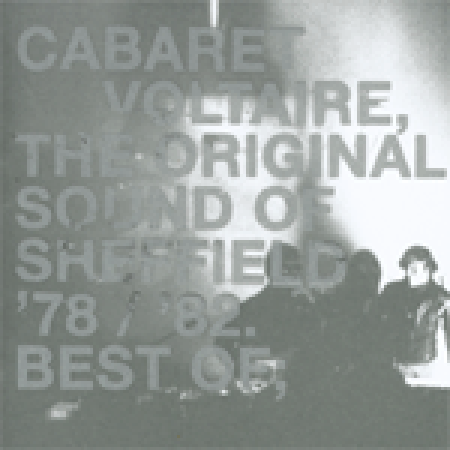
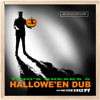 Just when I was about to abandon all hope of possessing a dub record to play while kids in Jar-Jar Binks outfits come knocking on my door this materializes!
Just when I was about to abandon all hope of possessing a dub record to play while kids in Jar-Jar Binks outfits come knocking on my door this materializes!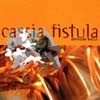 All the noises and frequencies on this record have been produced using self-constructed equipment, resulting in a sound not very far away from early analog synthesizer experiments or a tone generators humming. These home made drones are divided into three parts, add up to a total of 46 minutes, and are nicely packed in a miniature album-like gatefold sleeve. Two of the three parts were mixed, edited and mastered with fellow Australian Oren Ambarchi (and Section Two with Scott Horscroft). Without this name dropping, however, I doubt this disc would have been released. There are no warmly welcomed richly layered textures or multi-level sound structures, instead, the result is, on numerous levels minimal (minimal in conception and minimal in effect). The balance between disturbing and hypnotizing sounds is so well-kept that it lacks a certain excitement besides the hidden gimmick—a subliminal overdrive when the speakers start to crackle as the mastering job pushes the CD output level in the red zone of the LED display. Somehow this release leaves me slightly puzzled with an isolated feel. From the start to the end, Walls musically guides us through the middle of nowhere without any clue or destination. I like my music to be a bit more expressive or excessive but for more settled minds this might be a welcome refreshment in noisy drone ambience.
All the noises and frequencies on this record have been produced using self-constructed equipment, resulting in a sound not very far away from early analog synthesizer experiments or a tone generators humming. These home made drones are divided into three parts, add up to a total of 46 minutes, and are nicely packed in a miniature album-like gatefold sleeve. Two of the three parts were mixed, edited and mastered with fellow Australian Oren Ambarchi (and Section Two with Scott Horscroft). Without this name dropping, however, I doubt this disc would have been released. There are no warmly welcomed richly layered textures or multi-level sound structures, instead, the result is, on numerous levels minimal (minimal in conception and minimal in effect). The balance between disturbing and hypnotizing sounds is so well-kept that it lacks a certain excitement besides the hidden gimmick—a subliminal overdrive when the speakers start to crackle as the mastering job pushes the CD output level in the red zone of the LED display. Somehow this release leaves me slightly puzzled with an isolated feel. From the start to the end, Walls musically guides us through the middle of nowhere without any clue or destination. I like my music to be a bit more expressive or excessive but for more settled minds this might be a welcome refreshment in noisy drone ambience.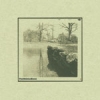 The chimes, clicks, and percussive beats heard on The Mobius Band's 'Three' EP are an old chestnut. We have heard them before. Perhaps not in this setting, not in this wood. But we know them, just as you know the guy who seems to show up at every show you attend. The Mobius Band surround their slyly standard indie rock songs with a swirl of electronics. The tactic is more successful in some songs than others. Most noticeably, the instrumental songs on "Three" have a hard time distinguishing themselves because the synth effects and the beat processors which The Mobius Band use are nothing new, and nothing novel is done with them. The more successful songs, like "Arrow," have at their core simply a strong rock song, regardless of the electronics dancing around them. And that is what the electronics really amount to: sonic flourishes on top of rock songs, dressing on salad. The electronic instrumentation feels superfluous, though in a live setting it admittedly could add color to improvisational parts. On record, it ends up tasting rather like a stale Tortoise song, which is already likely covered with bacterium. When The Mobius Band fire up a long instrumental track, I tend to forget about them. When the Mobius Band sing, I am more apt to listen.
The chimes, clicks, and percussive beats heard on The Mobius Band's 'Three' EP are an old chestnut. We have heard them before. Perhaps not in this setting, not in this wood. But we know them, just as you know the guy who seems to show up at every show you attend. The Mobius Band surround their slyly standard indie rock songs with a swirl of electronics. The tactic is more successful in some songs than others. Most noticeably, the instrumental songs on "Three" have a hard time distinguishing themselves because the synth effects and the beat processors which The Mobius Band use are nothing new, and nothing novel is done with them. The more successful songs, like "Arrow," have at their core simply a strong rock song, regardless of the electronics dancing around them. And that is what the electronics really amount to: sonic flourishes on top of rock songs, dressing on salad. The electronic instrumentation feels superfluous, though in a live setting it admittedly could add color to improvisational parts. On record, it ends up tasting rather like a stale Tortoise song, which is already likely covered with bacterium. When The Mobius Band fire up a long instrumental track, I tend to forget about them. When the Mobius Band sing, I am more apt to listen. Ms. John Soda, the moniker under which duo Micha Acher and Stephanie Boehm collaborate, will no doubt draw comparisons to both label mates Lali Puna and the other musical project of Acher, The Notwist. Their debut album, however, has a sound which distinguishes itself from both the Notwist and Lali Puna for its energetic pop-sensibilities over the loose jazz and clinical electronics of each, respectively.
Ms. John Soda, the moniker under which duo Micha Acher and Stephanie Boehm collaborate, will no doubt draw comparisons to both label mates Lali Puna and the other musical project of Acher, The Notwist. Their debut album, however, has a sound which distinguishes itself from both the Notwist and Lali Puna for its energetic pop-sensibilities over the loose jazz and clinical electronics of each, respectively. Acid Mothers Temple's "Electric Heavyland" is the kind of record that makes me want to adopt all kinds of unnecessary, Lester Bangs-style rock critic hyperbole. I want to compare Kawabata Mokoto to a shaman, summoning up spirits with his giant stone slabs of high magickal noise and grandiose riffs. I want to compare this album to some obscure circa-70's krautrock chestnut. I want to write in ALL CAPS AND END EVERY SENTENCE WITH THREE EXCLAMATION POINTS!!! Although I kind of detest this style of critique, I'm not sure how else to approach this excellent new disc by Acid Mothers Temple and the Melting Paraiso UFO. So, here goes:
Acid Mothers Temple's "Electric Heavyland" is the kind of record that makes me want to adopt all kinds of unnecessary, Lester Bangs-style rock critic hyperbole. I want to compare Kawabata Mokoto to a shaman, summoning up spirits with his giant stone slabs of high magickal noise and grandiose riffs. I want to compare this album to some obscure circa-70's krautrock chestnut. I want to write in ALL CAPS AND END EVERY SENTENCE WITH THREE EXCLAMATION POINTS!!! Although I kind of detest this style of critique, I'm not sure how else to approach this excellent new disc by Acid Mothers Temple and the Melting Paraiso UFO. So, here goes: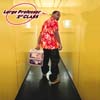 I'm willing to accept the fact that I have a favorable bias towards Queens-based rappers and producers, considering I grew up in Rego Park (right across the street from the infamous Lefrak City co-ops) and Forest Hills. However, I doubt that any true hip-hop heads would argue about the quality that has been coming out of this multicultural residential borough since the very beginning of the genre. Who better to represent QB than someone who's been in the game from Day One^?enter Large Professor.
I'm willing to accept the fact that I have a favorable bias towards Queens-based rappers and producers, considering I grew up in Rego Park (right across the street from the infamous Lefrak City co-ops) and Forest Hills. However, I doubt that any true hip-hop heads would argue about the quality that has been coming out of this multicultural residential borough since the very beginning of the genre. Who better to represent QB than someone who's been in the game from Day One^?enter Large Professor.
